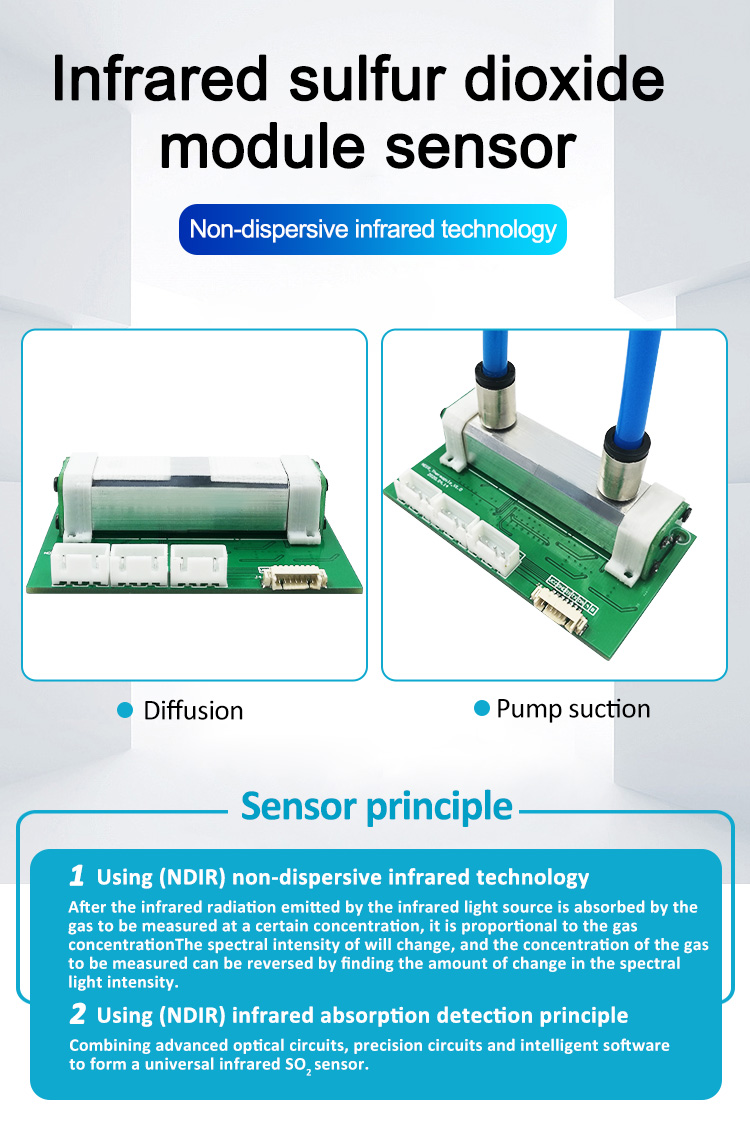Gas sensors have become a crucial component in industrial safety measures, protecting workers from the dangers of gas leaks and explosions. Traditional gas detection methods, such as visual inspection and manual sampling, are time-consuming and unreliable, making gas sensor-based detection systems an attractive alternative. These systems can detect even the smallest leaks and alert workers to potential dangers before they turn into disasters.
One of the most significant advantages o f gas sensor-based detection systems is their high sensitivity. Today's gas sensors can detect gas concentrations as low as parts per billion (ppb) or even parts per trillion (ppt), providing early warning of potential leaks that might otherwise go unnoticed. This high sensitivity also means that smaller amounts of gas can trigger alarms, leading to faster response times and more effective safety measures.
f gas sensor-based detection systems is their high sensitivity. Today's gas sensors can detect gas concentrations as low as parts per billion (ppb) or even parts per trillion (ppt), providing early warning of potential leaks that might otherwise go unnoticed. This high sensitivity also means that smaller amounts of gas can trigger alarms, leading to faster response times and more effective safety measures.
Another advantage of gas sensor-based detection systems is their ease of use. Unlike traditional methods, which require manual inspection and interpretation of results, gas sensor-based systems can be fully automated, with continuous monitoring and real-time alerts. This automation not only reduces the workload on plant operators but also provides greater accuracy and consistency in detecting potential safety hazards.
Gas sensor-based detection systems are also highly customizable, allowing them to be tailored to the specific needs of different industrial settings. Different types of gas sensors can be used to detect a wide range of gases, including toxic and combustible gases, as well as volatile organic compounds (VOCs) that are harmful to human health. The sensors can also be configured to detect gases at different levels of concentration, allowing for customized alarm thresholds to be set based on the specific risks associated with each gas.
Moreover, gas sensor-based detection systems are cost-effective compared to traditional gas detection methods. They can be integrated into existing plant infrastructure, reducing the need for costly refurbishments or redesigns. Additionally, the lower maintenance costs of gas sensor-based systems, along with their improved accuracy and faster response times, can lead to significant savings over time.
The reliability of gas sensor-based detection systems is another significant advantage. Unlike manual inspection and sampling methods, which rely on human interpretation and error-prone processes, gas sensors provide accurate and reliable readings of gas concentrations in real-time. This allows for timely response and mitigation measures to be taken, increasing the safety of workers and reducing the risk of accidents.
Gas sensor-based detection systems can also be used for predictive maintenance, allowing plant operators to identify potential issues before they escalate into major incidents. By continuously monitoring gas concentrations and detecting changes in gas levels over time, these systems can provide early warning of problems such as equipment failure or corrosion, enabling maintenance teams to take corrective action before an accident occurs.
In conclusion, gas sensor-based detection systems offer numerous advantages over traditional gas detection methods for industrial safety. These systems provide high sensitivity, ease of use, customizability, cost-effectiveness, reliability, and the ability to facilitate predictive maintenance. With greater emphasis being placed on worker safety and environmental protection, the use of gas sensor-based detection systems is likely to become even more widespread in the coming years.
 : +86 155 8830 2704
: +86 155 8830 2704 : jxdziot@gmail.com
: jxdziot@gmail.com
